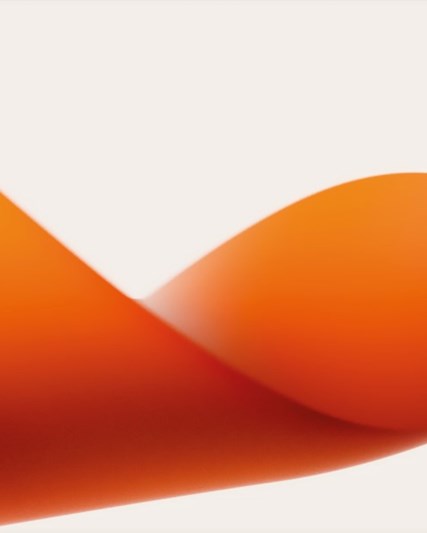China approves Cervarix two-dose vaccine schedule for girls aged 9 to 14 against certain types of cancer-causing human papillomavirus
For media and investors only
Issued: London, UK
- China’s National Medical Products Administration (NMPA) has approved a two-dose vaccine schedule for Cervarix in girls aged between 9 to 14 years for the prevention of cervical cancer, cervical intraepithelial neoplasia and adenocarcinoma in situ causally related to oncogenic Human Papillomavirus (HPV) types 16 and 18
- In 2020, there were approximately 110,000 new cases of cervical cancer and 59,000 deaths due to the disease in China[1]
GSK plc (LSE/NYSE: GSK) announced today that a two-dose schedule for its HPV vaccine Cervarix [Human Papillomavirus bivalent (types 16, 18) Vaccine, Recombinant)] has been approved by China’s NMPA for girls aged 9 to 14. With this approval, Cervarix is the first imported two-dose HPV vaccine for this age group in mainland China.
The NMPA authorisation of the two-dose regimen adds China to two-dose approvals in approximately 100 countries, including the European Union, Asia, Africa, and Latin America.[2]-[7] The three-dose schedule remains on the label for girls and women aged 15-45 years in China.
About cervical cancer
Cervical cancer has the highest mortality of all malignant tumours in the female reproductive system in China1, with 110,000 new cases of cervical cancer and 59,000 deaths due to the disease. Incidence and mortality rates show an increasing trend in younger women[8]. The potential impact of vaccines against oncogenic HPV types 16 and 18 is estimated to be high (84.5%) against total squamous cell carcinoma (SCC).[9]
Vaccination with HPV vaccine in the female population at appropriate ages may significantly reduce the morbidity of cervical cancer and precancerous lesions, thereby reducing the burden of the disease. HPV is predominately transmitted through sexual contact; the primary target population for HPV vaccination is girls aged 9-14 years who have not yet had sex. With a two-dose schedule, more girls could be vaccinated against HPV, leading to the protection of more women against HPV-related cervical cancer.
About Cervarix
Cervarix (Human Papillomavirus vaccine Types 16 and 18 [Recombinant, AS04 adjuvanted]) is a non-infectious recombinant, AS04-adjuvanted vaccine. Cervarix demonstrated direct evidence of lowering cervical cancer incidence rates[10]. A register-based study in England where girls were offered the vaccine in school year eight (aged 12 to 13 years), had an 87% reduction for cervical cancer and 97% reduction for precancerous lesions (cervical intraepithelial neoplasia, CIN, grade 3); a more significant effect than expected based on the incidence of HPV 16/18 strains (68%) included in the vaccine.[10] Cervarix has also shown to be effective 93·2% (78·9–98·7) against all CIN3+, irrespective of HPV type in the lesion and including lesions with no HPV 16/18 DNA detected, suggesting a wider than HPV 16/18 benefit.[11]
About GSK
GSK is a science-led global healthcare company. For further information, please visit www.gsk.com/en-gb/company/.
Cautionary statement regarding forward-looking statements
GSK cautions investors that any forward-looking statements or projections made by GSK, including those made in this announcement, are subject to risks and uncertainties that may cause actual results to differ materially from those projected. Such factors include, but are not limited to, those described in the Company's Annual Report on Form 20-F for 2021, GSK’s Q1 Results for 2022 and any impacts of the COVID-19 pandemic.
Reference:
[1]Chen WQ, Zheng RS, Baade PD,et al. Cancer Statistics in China, 2015. CA CANCER J CLIN 2016; 00:00–00:1-18
[2]GSK Cervarix® two-dose schedule receives European marketing authorisation https://www.gsk.com/en-gb/media/press-releases/gsk-cervarix-two-dose-schedule-receives-european-marketing-authorisation/
[3]Lyseng-Williamson, K.A., Human papillomavirus-16/18 AS04-adjuvanted vaccine (Cervarix®): a guide to its two-dose schedule in girls aged 9-14 years in the EU. Paediatr Drugs, 2014. 16(3): p. 247-53.
[4]Tay, S.K., et al., Cost-effectiveness of two-dose human papillomavirus vaccination in Singapore. Singapore Med J, 2018. 59(7): p. 370-382.
[5]Germar, M.J., et al., Cost-effectiveness analysis of AS04-adjuvanted human papillomavirus 16/18 vaccine compared with human papillomavirus 6/11/16/18 vaccine in the Philippines, with the new 2-dose schedule. Hum Vaccin Immunother, 2017. 13(5): p. 1158-1166.
[6]Van Kriekinge, G., et al., Comparative Cost-Effectiveness Analysis of Two Different Two-Dose Human Papillomavirus Vaccines in Malaysia. Asian Pac J Cancer Prev, 2018. 19(4): p. 933-940.
[7]GSK internal tracking system for Global Regulatory Affairs.
[8]Liuye Huang, Xuelian Zhao,Fanghui Zhao.Trends in incidence and mortality of cervical cancer and progress in its prevention strategies[J]. Electronic Journal of Comprehensive Cancer Therapy, 2021
[9]Chen, W., et al., Human papillomavirus type-distribution in cervical cancer in China: the importance of HPV 16 and 18. Cancer Causes Control, 2009. 20(9): p. 1705-13.
[10]Falcaro M, Castañon A, Ndlela B, Checchi M, Soldan K, Lopez-Bernal J, Elliss-Brookes L, Sasieni P. The effects of the national HPV vaccination programme in England, UK, on cervical cancer and grade 3 cervical intraepithelial neoplasia incidence: a register-based observational study. Lancet. 2021 Nov 3:S0140-6736(21)02178-4.
[11]Lehtinen M, Paavonen J, Wheeler CM, et al. Overall efficacy of HPV 16/18 AS04-adjuvanted vaccine against grade 3 or greater cervical intraepithelial neoplasia: 4-year end-of-study analysis of the randomised, double-blind PATRICIA trial - Web appendix. Lancet Oncol 2012; 13: 89-99.



